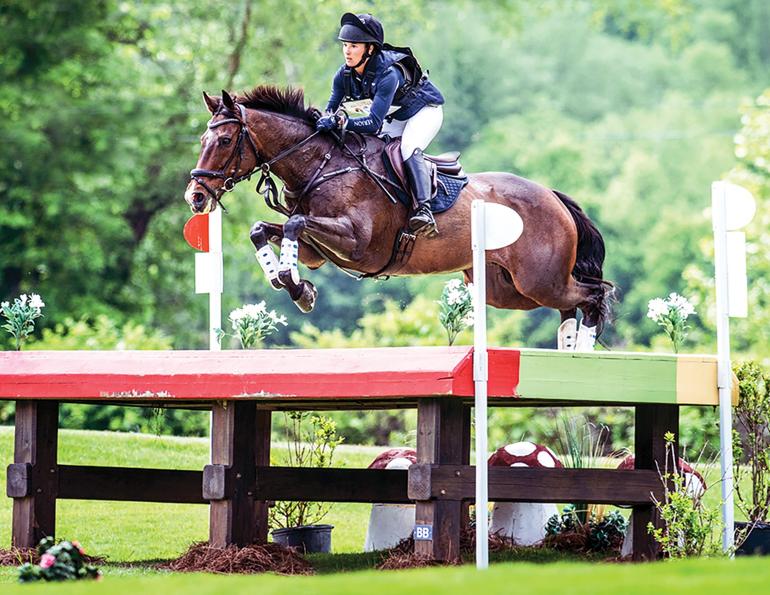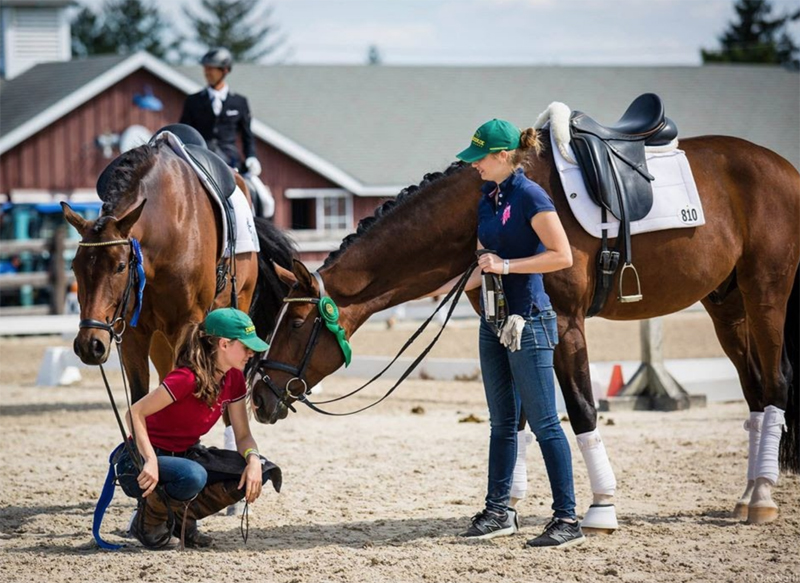Becoming a working student equestrian is a dream for many horse lovers. It’s a unique chance to learn and work with horses.
Imagine working with horses every day, learning from experts, and improving your riding skills. This path offers hands-on experience in the equestrian world. You get to live and breathe horses while gaining invaluable knowledge. Balancing work and study can be tough, but it’s rewarding.
This guide will help you understand the steps to become a successful working student equestrian. Dive in to learn how to turn your passion into a fulfilling experience.

Credit: horserookie.com
Balancing School And Riding
Balancing school and riding can be challenging for student equestrians. You need to manage time wisely and prioritize tasks. A structured approach helps in achieving both academic and riding goals.
Time Management Strategies
Effective time management is key. Create a weekly schedule. Allocate specific times for schoolwork and riding sessions. Use a planner or a digital calendar. This helps you visualize your week. Stick to the plan as much as possible.
Break down tasks into smaller, manageable chunks. This makes them less overwhelming. Use short breaks to recharge. Avoid multitasking. Focus on one task at a time. This improves efficiency and reduces stress.
Prioritizing Tasks Effectively
Prioritizing tasks ensures you complete the most important ones first. Identify urgent and important tasks. Tackle these first. Use a priority matrix to categorize your tasks. This helps in deciding what to do next.
Set realistic goals for each day. Avoid overloading your schedule. This prevents burnout. Make sure to include time for rest and relaxation. Balance is crucial for long-term success.

Credit: www.horsejournals.com
Creating A Schedule
Balancing school and equestrian activities can be challenging. But with a well-planned schedule, you can manage both effectively. Here’s how you can create a schedule that helps you excel in academics while nurturing your passion for horses.
Daily Routines
Establishing a solid daily routine is crucial. Start by listing all your daily tasks. Include class timings, study hours, and stable duties. Here is a simple way to structure your day:
- 6:00 AM – Wake up and have breakfast
- 7:00 AM – Morning stable chores
- 8:00 AM – Attend school classes
- 3:00 PM – Study and complete homework
- 5:00 PM – Evening riding session
- 7:00 PM – Dinner and relaxation
- 9:00 PM – Review the day and plan for tomorrow
Stick to your routine daily. This makes balancing easier.
Weekly Planning
Weekly planning helps you see the bigger picture. It allows you to allocate time for bigger tasks. Here’s a sample weekly plan:
| Day | Activities |
|---|---|
| Monday | School, Study, Light Riding |
| Tuesday | School, Study, Stable Maintenance |
| Wednesday | School, Study, Riding Lesson |
| Thursday | School, Study, Horse Care |
| Friday | School, Study, Riding Practice |
| Saturday | Extended Riding, Stable Cleanup |
| Sunday | Rest, Plan Upcoming Week |
Adjust the weekly plan based on your specific needs. Ensure you have time for rest and fun.
Finding The Right Barn
Becoming a working student equestrian is a rewarding journey. One of the first steps is finding the right barn. The right barn will support your growth and provide a positive environment. Let’s explore how to find the best barn for your needs.
Researching Facilities
Start by researching different barns in your area. Look for facilities that offer the services you need. Check if they have well-maintained stables, arenas, and turnout areas. A well-equipped barn will make your experience enjoyable.
Visit the barns to see the facilities firsthand. Note the cleanliness and overall condition. A clean barn shows attention to detail and care for the horses.
Consider the location of the barn. A convenient location will save you time and make it easier to balance your studies and riding.
Evaluating Trainers
Having a good trainer is crucial. A skilled trainer will help you improve and stay motivated. Look for trainers with experience and positive reviews.
Meet the trainers in person. Discuss your goals and see if their teaching style matches your learning style. A good rapport with your trainer is important for your success.
Ask other riders about their experiences with the trainers. Personal recommendations can provide valuable insights.
Evaluate the trainer’s qualifications. Ensure they have the proper certifications and a good track record. A qualified trainer will provide better guidance and support.
Building A Support Network
Being a working student equestrian requires a strong support network. Balancing work, studies, and horse care can be challenging. A good support system helps you stay focused and motivated. Let’s look at the key elements of building this network.
Family And Friends Support
Family and friends play a crucial role in your journey. They can offer emotional support during tough times. Their encouragement keeps you motivated. Share your goals and challenges with them. Let them understand your passion for equestrian life. They can help you manage time and stay organized.
Ask for their assistance when needed. They might help with chores or lend a listening ear. Having a strong backing from loved ones makes a huge difference.
Connecting With Fellow Equestrians
Building connections with fellow equestrians is vital. They understand the unique challenges you face. Join local equestrian clubs or online communities. Attend events and meetups. These connections provide valuable insights and advice.
Experienced equestrians can share tips on balancing work and riding. You can also find study partners or riding buddies. Together, you can motivate each other and share resources. A supportive equestrian community fosters growth and learning.
Maximizing Riding Time
Finding time for riding can be tough for working student equestrians. Balancing school, work, and riding requires careful planning. Below are some tips to help you maximize your riding time effectively.
Efficient Training Sessions
Efficiency is key to making the most of your training sessions. Here are some tips to ensure your time is well-spent:
- Set Clear Goals: Before each session, decide what you want to achieve.
- Warm-Up Properly: Spend at least 10 minutes warming up your horse.
- Focus on Quality: Short, focused sessions can be more effective than long ones.
- Use a Timer: Keep track of time to avoid overworking your horse.
Cross-training Exercises
Cross-training helps improve your horse’s overall fitness and keeps them engaged. Here are some exercises to incorporate:
- Ground Poles: Enhance coordination and balance with ground pole exercises.
- Hill Work: Build strength and endurance by riding on varied terrain.
- Swimming: Swimming is a low-impact exercise that builds muscle.
- Trail Riding: Great for mental stimulation and relaxation.
Incorporate these exercises into your routine to keep your horse fit and happy.
| Exercise | Benefits |
|---|---|
| Ground Poles | Improves coordination and balance |
| Hill Work | Builds strength and endurance |
| Swimming | Low-impact muscle building |
| Trail Riding | Mental stimulation and relaxation |
Maximizing your riding time takes planning and effort. By setting clear goals and incorporating cross-training exercises, you can ensure that both you and your horse get the most out of every session.
Maintaining Academic Performance
Balancing school and a passion for equestrian activities is challenging. But, with the right strategies, you can excel in both areas. Prioritizing your studies while managing your riding schedule is essential. Here are some tips to help you maintain your academic performance.
Study Tips
Create a study schedule. Allocate specific times for studying and riding. Stick to this schedule to ensure you cover all subjects. Use short, focused study sessions. Break down your study time into smaller chunks. This can help you retain information better.
Take regular breaks. Short breaks between study sessions can improve your focus. Use flashcards for quick reviews. They are great for memorizing facts and concepts. Find a quiet place to study. A distraction-free environment helps you concentrate better.
Utilizing School Resources
Take advantage of school resources. Libraries offer a quiet place to study and access to helpful materials. Use online resources provided by your school. Many schools offer online lectures and study guides.
Seek help from teachers. They can provide extra support and answer your questions. Join study groups. Studying with peers can improve your understanding of complex topics. Attend tutoring sessions if available. Tutors can offer personalized assistance.
Handling Stress
Handling stress as a working student equestrian can be challenging. Balancing school, work, and riding requires effective stress management strategies. It’s important to recognize signs of stress early and take action to address them. Below are some practical tips to help you manage stress effectively.
Relaxation Techniques
Practicing relaxation techniques can help reduce stress. Deep breathing exercises are simple and effective. Sit comfortably, close your eyes, and take slow, deep breaths. Focus on your breathing and let go of tension.
Another technique is progressive muscle relaxation. Tense and then relax each muscle group, starting from your toes and moving up to your head. This can help release physical tension and calm your mind.
Meditation is also beneficial. Spend a few minutes each day in quiet reflection. Focus on a positive thought or visualize a peaceful scene. This helps clear your mind and reduces stress levels.
Seeking Professional Help
If stress becomes overwhelming, consider seeking professional help. Talking to a counselor can provide valuable support. They can help you develop coping strategies and offer a listening ear.
Therapists can also teach you cognitive-behavioral techniques. These can change negative thought patterns and improve your stress response. It’s okay to ask for help. Your mental health is important.
Additionally, joining a support group can be beneficial. Sharing experiences with others who understand your challenges can provide comfort and advice. You are not alone in this journey.
Setting Realistic Goals
Becoming a working student equestrian is a challenging yet rewarding journey. Balancing work and riding requires setting realistic goals. These goals help you stay focused and motivated. Let’s break down how to set both short-term objectives and long-term aspirations.
Short-term Objectives
Short-term objectives are the stepping stones to your larger dreams. They help you track progress in smaller, manageable steps. Here are some tips for setting short-term goals:
- Daily Routines: Plan your day with specific tasks. Include riding practice, study time, and work hours.
- Weekly Targets: Set weekly targets, such as mastering a new riding technique or completing assignments.
- Monthly Milestones: Aim for monthly milestones. These could be participating in a small competition or improving your time management.
Short-term goals keep you on track and motivated. They make the larger objectives seem less daunting.
Long-term Aspirations
Long-term aspirations define your ultimate career goals. They give you a clear vision of your future. Here are ways to set and achieve long-term goals:
- Career Planning: Decide where you see yourself in 5-10 years. Do you want to be a professional rider or own a stable?
- Skill Development: Focus on continuous learning. Take advanced riding courses or attend workshops.
- Networking: Build connections in the equestrian community. Networking opens doors to new opportunities.
Long-term goals keep you focused on your ultimate career path. They help you make decisions that align with your aspirations.

Credit: www.usef.org
Frequently Asked Questions
What Is A Working Student Equestrian?
A working student equestrian is someone who works at a stable while receiving training in riding and horse care. This role often involves tasks like grooming, feeding, and exercising horses in exchange for lessons.
How Do I Start As A Working Student?
To start as a working student, contact stables or trainers offering such positions. Demonstrate your passion for horses and willingness to work hard. Prior experience with horses can be beneficial.
What Are The Benefits Of Being A Working Student?
Being a working student offers hands-on experience, professional training, and networking opportunities. You can improve your riding skills, learn horse care, and make valuable industry connections.
Do Working Students Get Paid?
Payment for working students varies. Some positions offer a stipend, while others provide room, board, and lessons instead of a salary. It’s important to clarify compensation details before accepting a position.
Conclusion
Balancing studies and equestrian life is challenging yet rewarding. Stay organized. Prioritize tasks. Communicate clearly with your mentors. Embrace each learning opportunity. Take good care of your health. Remember, passion fuels perseverance. Stay committed, and you will succeed. Your journey as a working student equestrian is unique.
Enjoy every moment and keep striving for growth.



